Buy this landscape artwork Surreal Scene: Woman in Sea Green Dress on Vintage Televisions in Meadow by Elianne van Turennout on canvas, ArtFrame, poster and wallpaper, printed on demand in high quality.
About "Surreal Scene: Woman in Sea Green Dress on Vintage Televisions in Meadow"
by Elianne van Turennout
About the artwork
In a vast, picturesque meadow, secluded from the hustle and bustle of the modern world, a surreal scene unfolds. A woman, clad in an enchanting sea green dress that contrasts with the natural greenery around her, stands balancing on a whimsical stack of vintage televisions. Each of these TVs emits a steady stream of distortions and noise, as if each is whispering its own lost stories in a language of interference and faulty signals.
Instead of a face, her head has become a TV, equally enveloped in the same visual chaos that plagues the screens below her. This distorted image, a replacement for her identity, reflects a world where technology can take over and disrupt both identity and connection. Her arms reach up, an old telephone cord encircles her hand and ends in a floating, old-fashioned telephone receiver. This horn, detached and elusive, symbolises a yearning for communication, a call lost in the noise of an age where analogue simplicity has been supplanted by digital complexity.
The sky above this scene, previously a haven of calm, is now covered in the same disruptive noise exhibited by the screens, like an extension of chaos into natural order. Clouds, normally soft and fluid, now appear fragmented and distorted, as if succumbing to the disturbances escaping from the televisions.
This visual metaphor captures a moment of alienation and disorientation in an age where technology is constantly redefining our view of the world and our place in it. It expresses a melancholic message about the fault lines in human communication and identity created by the pervasive influence of faulty, obsolete technologies in a natural environment that cannot escape their invasion.

About Elianne van Turennout
It all started with a4 paper and HB pencils. As a child I was often impressed by how beautiful the world around me was. The urge to capture this beautiful world, and to show the people around me what I saw, was actually there from the beginning. If.. Read more…
 Germany
Germany Ordered in April 2021
Ordered in April 2021
 Netherlands
Netherlands Ordered in October 2018
Ordered in October 2018

 Germany
Germany Ordered in April 2021
Ordered in April 2021
 Netherlands
Netherlands Ordered in March 2021
Ordered in March 2021
 Germany
Germany Ordered in April 2021
Ordered in April 2021
 Netherlands
Netherlands Ordered in November 2021
Ordered in November 2021
 Netherlands
Netherlands Ordered in November 2021
Ordered in November 2021
 Germany
Germany Ordered in June 2019
Ordered in June 2019
 Netherlands
Netherlands Ordered in August 2021
Ordered in August 2021
 Netherlands
Netherlands Ordered in April 2018
Ordered in April 2018
 Germany
Germany Ordered in May 2020
Ordered in May 2020
 Germany
Germany Ordered in April 2025
Ordered in April 2025
About the material
ArtFrame™
Interchangeable Art Prints
- High-quality print
- Easily interchangeable
- Acoustic function
- Large sizes available
Discover the artworks of Elianne van Turennout
 Enchanting Macro Photo of Deep Red Rose with Dewdrops: Natural Beauty in DetailElianne van Turennout
Enchanting Macro Photo of Deep Red Rose with Dewdrops: Natural Beauty in DetailElianne van Turennout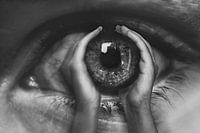 Monochrome Photography: Hands Holding an Eye - An Image of Intimacy and ConnectionElianne van Turennout
Monochrome Photography: Hands Holding an Eye - An Image of Intimacy and ConnectionElianne van Turennout Majestic Autumn Photo: The Tranquillity and Serenity of a Red-Tinged ForestElianne van Turennout
Majestic Autumn Photo: The Tranquillity and Serenity of a Red-Tinged ForestElianne van Turennout Majestic Deer in Enchanting Red Forest - Breathtaking Autumn Photo for InteriorsElianne van Turennout
Majestic Deer in Enchanting Red Forest - Breathtaking Autumn Photo for InteriorsElianne van Turennout freedomElianne van Turennout
freedomElianne van Turennout Authentic Portrait Photography: capturing Unique Beauty and PersonalityElianne van Turennout
Authentic Portrait Photography: capturing Unique Beauty and PersonalityElianne van Turennout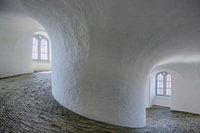 Majestic Interior of the Rundetaarn - Timeless Danish Architecture and History in PicturesElianne van Turennout
Majestic Interior of the Rundetaarn - Timeless Danish Architecture and History in PicturesElianne van Turennout Tower Bridge in London: Nighttime Photography with Haunted Taxi and Dynamic Light TracksElianne van Turennout
Tower Bridge in London: Nighttime Photography with Haunted Taxi and Dynamic Light TracksElianne van Turennout Black Rose in Morning Dew - Enchanting Photo with Mystical BeautyElianne van Turennout
Black Rose in Morning Dew - Enchanting Photo with Mystical BeautyElianne van Turennout Beautiful Woman with Freckles and Straight Hair - Intimate Portrait PhotographyElianne van Turennout
Beautiful Woman with Freckles and Straight Hair - Intimate Portrait PhotographyElianne van Turennout Warm coffee scene with speculoos on wooden table - Perfect decoration for your interiorsElianne van Turennout
Warm coffee scene with speculoos on wooden table - Perfect decoration for your interiorsElianne van Turennout Photo of Feet or Shoes of Couple in the Rain: Symbolism of Desire and ProximityElianne van Turennout
Photo of Feet or Shoes of Couple in the Rain: Symbolism of Desire and ProximityElianne van Turennout Unique Photo Manipulation: Man in Suit with Four-leaf Clover Head - Creative Art for Wall DecorationElianne van Turennout
Unique Photo Manipulation: Man in Suit with Four-leaf Clover Head - Creative Art for Wall DecorationElianne van Turennout Sleeping Woman Floats Above Bed in Misty Outer Air (Seen at VT Wonen)Elianne van Turennout
Sleeping Woman Floats Above Bed in Misty Outer Air (Seen at VT Wonen)Elianne van Turennout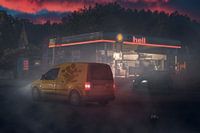 The Impact of Activism: Art as a Symbol of Conservation and ChangeElianne van Turennout
The Impact of Activism: Art as a Symbol of Conservation and ChangeElianne van Turennout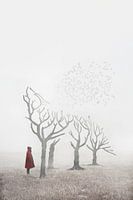 Little Red Riding Hood in Enchanted Forest with Wolf Silhouette - Mystical and Magical Wall DecorElianne van Turennout
Little Red Riding Hood in Enchanted Forest with Wolf Silhouette - Mystical and Magical Wall DecorElianne van Turennout The Authenticity of Traditional Values on Social Media: A Critical AnalysisElianne van Turennout
The Authenticity of Traditional Values on Social Media: A Critical AnalysisElianne van Turennout Magical Scene at Waal Bridge Nijmegen: Dreamy Girl with Hot Air BalloonsElianne van Turennout
Magical Scene at Waal Bridge Nijmegen: Dreamy Girl with Hot Air BalloonsElianne van Turennout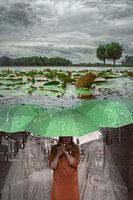 Symbolic Transition: Mystical Scene in Nijmegen with Water Landscape and UmbrellasElianne van Turennout
Symbolic Transition: Mystical Scene in Nijmegen with Water Landscape and UmbrellasElianne van Turennout Sheep with Chewing Bubble on Pink Background - Playful and Quirky ArtworkElianne van Turennout
Sheep with Chewing Bubble on Pink Background - Playful and Quirky ArtworkElianne van Turennout
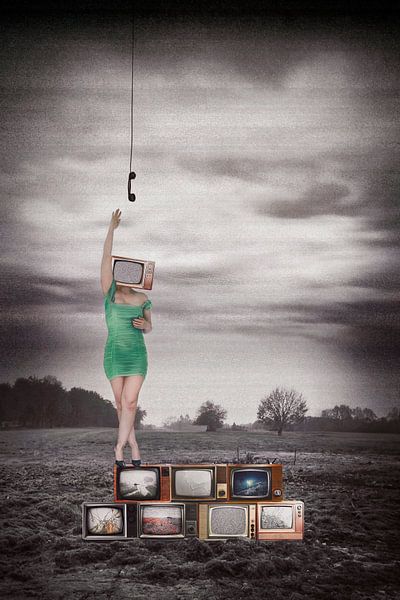


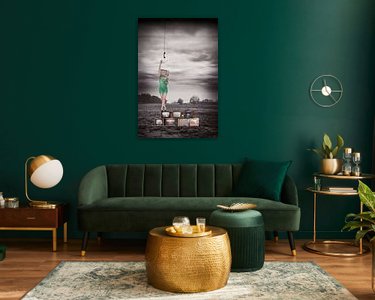



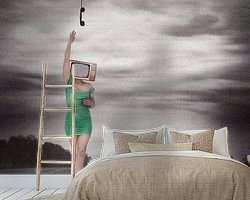
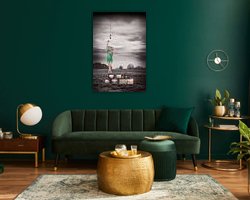
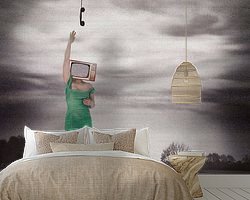



 Digital art
Digital art Dreamy Escapes
Dreamy Escapes Female
Female Headspace
Headspace Landscapes
Landscapes Meadow
Meadow Melancholic Elegance
Melancholic Elegance Mysterious Spheres
Mysterious Spheres Nostalgic Memories
Nostalgic Memories Retro Electronics Art
Retro Electronics Art Surrealism
Surrealism









